Iditarod veteran Aliy Zirkle seeks title after three second place finishes
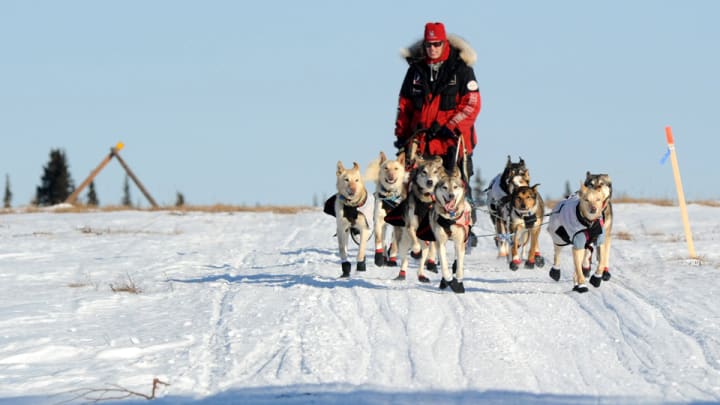
Racing was no longer the point. Aliy Zirkle was a pawn of Mother Nature. No markers were visible. The trail was lost. Caught in a churning blizzard after leaving the Iditarod’s penultimate checkpoint at White Mountain, Alaska, less than 100 miles from the finish, Zirkle and her dog team scrambled to hang on. Icy 50-mph winds sent them skidding across traction-less glare ice. The dogs would end up in a tangle of ganglines while Zirkle gripped her sled like it was an anchor separating life and death, which it was.
Eventually the snarl of musher, sled and canines would knock up against some driftwood and tumble over. She and the dogs would crawl along, right the sled, and try to find the trail. Despite the conditions, Zirkle knew that she was on a spit of land between a lagoon and the Bering Sea. She knew that if she careened into water, she and her team were done. “It was a survival situation,” she says. “It took all of my strength, mental and physical, and all of my dogs’ strength.”
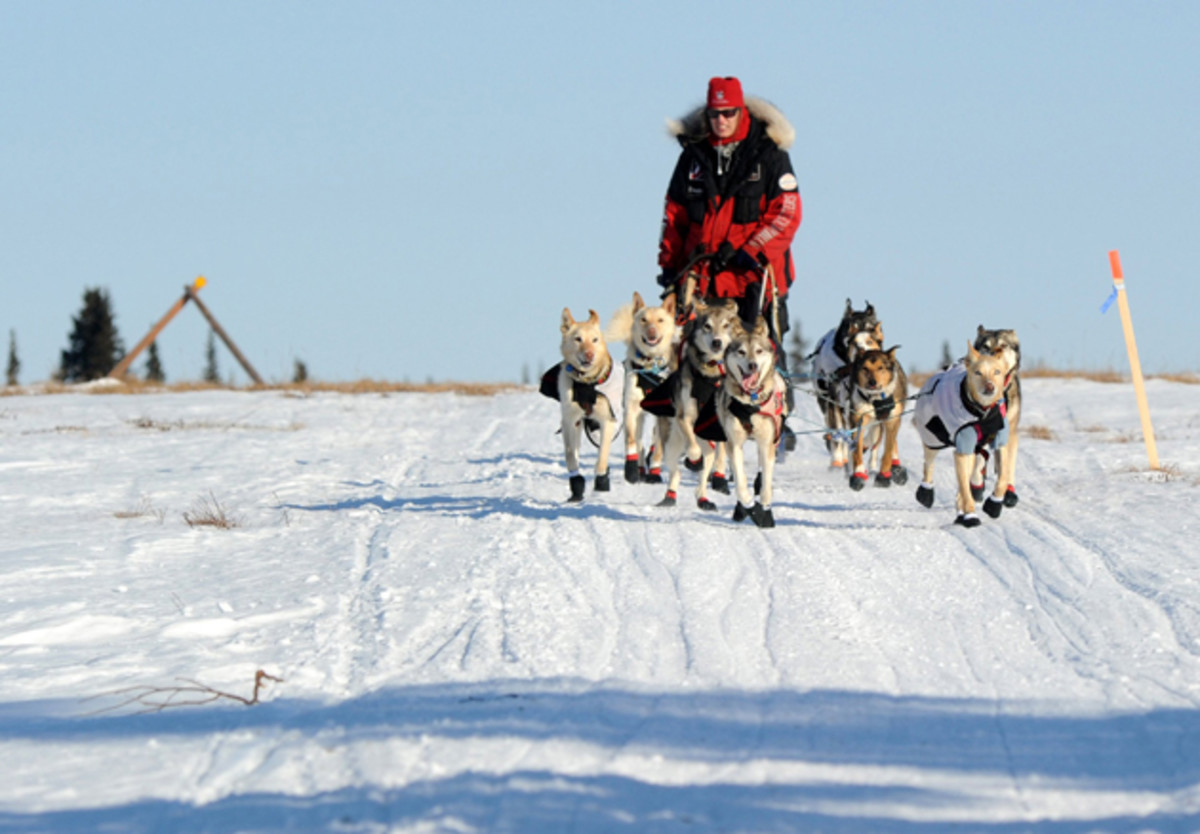
In 42 years, only two women mushers have won the Iditarod Trail Sled Dog Race, the 1,000-mile northwesterly expedition from Anchorage to Nome, and none since 1990. A woman champion is overdue – especially Zirkle. At 45, she is in her mushing prime. The core of Zirkle’s standout team—eight-year-old siblings Nacho, Chica and her one-in-a-million lead dog, Quito—is near retirement. For the past three years, the physically imposing but steadfastly cheery Zirkle has finished second. That’s an unprecedented run of near misses in endurance mushing’s Holy Grail.
In 2000, Zirkle was anointed as the second coming of iconic Iditarod champion Susan Butcher when she became the first woman to win the 2000 Yukon Quest, the sport’s second most prestigious long-distance race. But she struggled to live up to the hype. For the next dozen years, she improved, but failed to crack the Iditarod’s top 10.
In 2012, she broke through. She soared to second, losing by a mere hour to first-time champion Dallas Seavey (at 25, the youngest ever). In 2013, she arrived 23 minutes behind Dallas’ father, Mitch Seavey (at 54, the oldest).
But nothing was quite like last year when Zirkle recorded the second-fastest time in Iditarod history at eight days, 13 hours, six minutes and 41 seconds—and it still wasn’t enough.
At the final Iditarod checkpoint, Safety, Zirkle was forced to wait out a storm with 50-mph winds just 22 miles from the finish line. As she was holed up at the checkpoint, Dallas Seavey, with a small remaining team of seven dogs (mushers can drop ailing or underperforming dogs at checkpoints), suddenly appeared and rolled past. Zirkle scrambled her team and gave chase. She was 19 minutes behind. Over the next 22 miles, her team cut the gap, gaining precious seconds with each mile, but she ran out of trail. The last 3 hours of the race were so chaotic that Seavey didn’t even realize he’d won when he crossed the finish line.
In a 2014 race marked by insubstantial snow and grizzly conditions, Zirkle lost the second closest Iditarod in history, again to Dallas Seavey. The margin was two minutes and 22 seconds.
****
Aliy and sister Kristin Zirkle were raised by fanatically “outdoorsy” parents. They hiked. They skied. They camped. They canoed. Her father worked for shoe manufacturer Thom McAn and they moved around, from Nashua, N.H., to Puerto Rico, and then to the suburbs of St. Louis. Throughout, Zirkle’s passions remained sports and animals. She kept horses, birds, cats and of course dogs—anything that her family didn’t nix.
Zirkle spent formative pre-teen years in the Caribbean cruising the streets on skateboard. A mutt named Carmel provided the locomotion. Gripping his leash, she navigated the boiling concrete sidewalks, raced other girls, skinned her knees and then climbed atop for more.
“That was my dog mushing as a child,” chuckles Zirkle. “Not quite the same as the Seaveys and the Mackeys,” she adds, referring to two of the Iditarod’s most decorated multigenerational families. “But hey, I can hold my own!”
As a volleyball recruit, Zirkle attended the University of Pennsylvania in Philadelphia because she felt she needed “a little more culture.” But after blowing out her knee the summer before her freshman year and failing to fully mesh with city life or click with the volleyball coach, she floundered. That’s when she saw a sign one afternoon in the science lab: Why are you studying biology in downtown Philadelphia when you can be in Alaska?
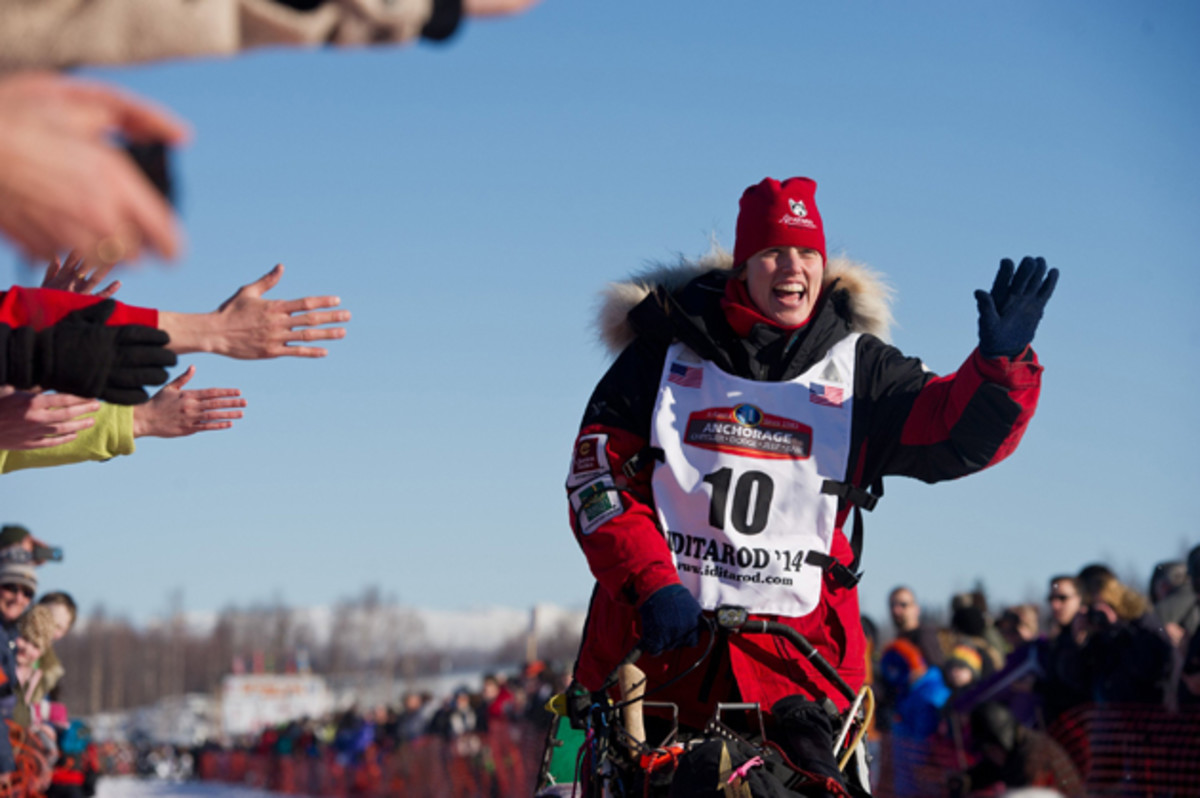
“I thought, holy cow, that’s a good question,” says Zirkle.
That summer, she left the urban Ivy League confines to work for U.S. Fish and Wildlife Services in a refuge above the Arctic Circle. She lived in a wall tent for several months. She earned four dollars a day. It was heaven. She fell in love with the vast spaces, the wild birds, the wandering caribou, the flowers and the grid-less wilderness existence. She also noticed something else. Everyone—men, women, old, young—pulled their own weight.
“I made it back to Penn in January and had a whole new vision on life,” she says.
Around that time, she met Tony Tenisci, the woman’s track and field coach. Tenisci had noticed a tall, explosive and naturally strong woman pumping iron in the weight room. Tenisci approached Zirkle and asked if she’d ever thrown. “I was like, ‘Thrown up? Thrown out of a bar? I don’t know what you’re talking about,’” says Zirkle. Tenisci explained the emerging sport of women’s hammer, she signed on and quickly became one of the country’s best. (She even qualified for trials at the 1992 Barcelona Olympics and just nearly missed the cut.) Once Tenisci got to know her, he sensed an indomitable spirit taking shape. “I knew something was destined for her and we would remember her far beyond her years at Penn,” he says.
****
Shortly after graduating from Penn with a biology degree in 1992, Zirkle and a female friend hiked for five months along the Appalachian Trail. They walked and camped from Maine to Tennessee. She occasionally froze, lost the trail, ran into oddballs and went through three pairs of boots. Good training, it turns out. For Zirkle had just begun to chart a course—long before her love of outdoors, animals and competition coalesced—that would qualify her for the shortlist of greatest sled-dog racers without a win in the Iditarod.
After returning to work in the Alaskan “bush” post-college, Zirkle had yet to embrace racing. She began to mush for the same reason native Alaskans have for generations. “I got dogs to travel to the post office and stuff,” she says. Her first winter, she adopted a nine-year-old trap-line dog named Skunk, sewed him a harness and cobbled together a sled. She climbed on the back and bellowed “Mush!” but Skunk would have none of it. “He was like—Are you kidding me? One dog? One person? Get the heck out of here,” she says. “Skunk taught me more about mushing than any dog ever.”
She eventually adopted more castoffs, borrowed $300 to buy an aging lead dog named Jack and formed her own small team.
She learned more about the sport around the time Butcher was done dominating the Iditarod. It wasn’t until she had settled near Fairbanks and was exposed to the Yukon Quest that the idea absorbed her. In other words, Zirkle cut her mushing teeth relatively late. As with the hammer, she was a natural.
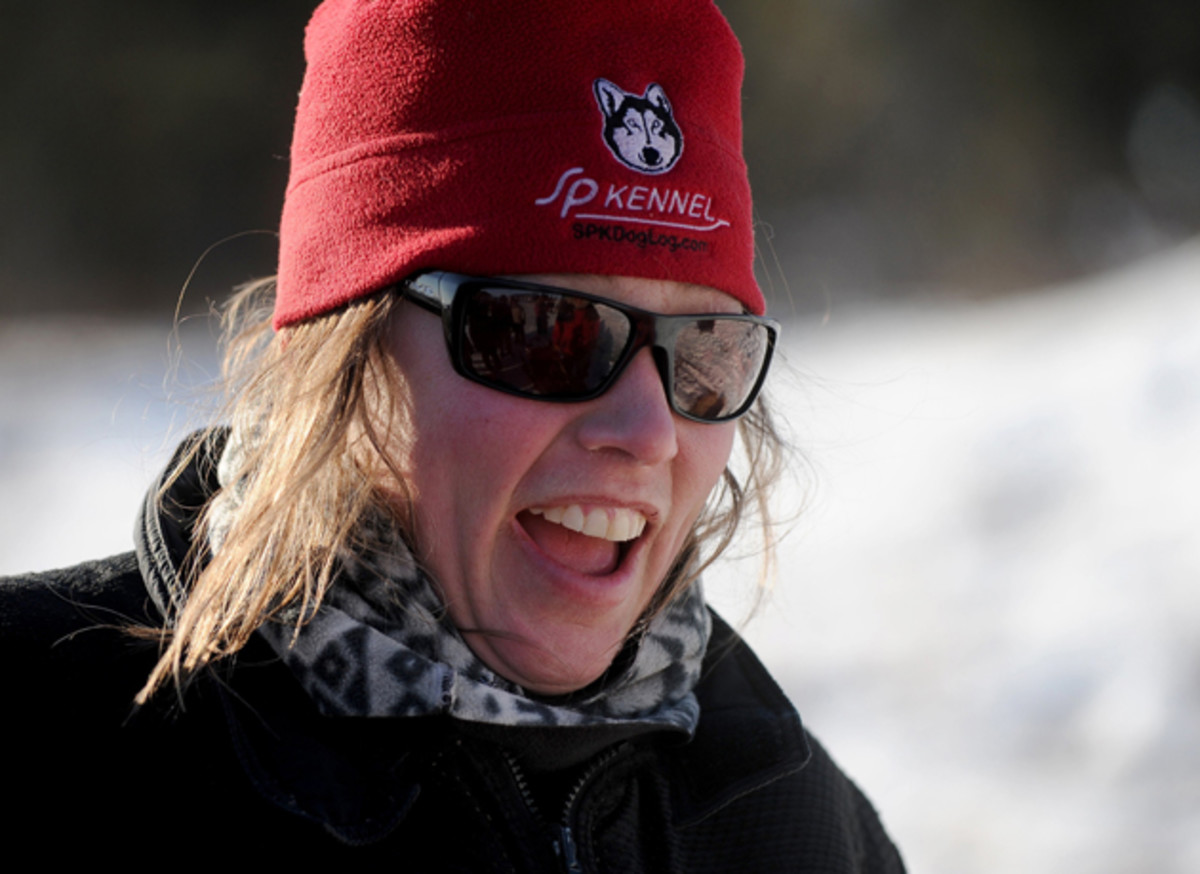
Today, Zirkle lives about 20 miles northeast of Fairbanks in the Alaskan interior with husband and partner in canine, Moore. Signs tacked to trees signal imminent arrival at their SP Kennel: “Caution: Dog Teams On Road.” Moore, a two-time Yukon Quest champion, is an accomplished musher in his own right. For the last few years, they have swapped their best dogs depending on the event. Moore finished second in February’s Yukon Quest with several dogs that will join Zirkle on the Iditarod.
Their two-story home sits in the center of a 10-acre compound. About 60 yapping and spinning Alaskan huskies—a relatively small contingent for mushers of their caliber—anchor an area that includes an enclosed dog barn, a work area (where Moore builds sleds) and a 15-foot treadmill for dog training and testing.
There’s a workout room, too, with medicine balls, a Bowflex trainer, human-size treadmill and resistance bands that Zirkle uses to strengthen her arms for ski poling.
“I work out a lot,” says Zirkle, who does not smoke and avoids alcohol during racing season. “I think fitness of a musher is as important as fitness of a dog.”
Besides battling the elements, mushers provide locomotion from the back of sleds by pushing with their feet and upper-body muscling with ski poles. In necessary conditions, they sometimes canter along side of the sled with their dogs. Zirkle focuses on strengthening her core.
“Fifty percent of the time you’re bent over,” she explains of the exertions involved with managing a dog team, which span from putting on dog booties to hooking up harnesses. She believes improved fitness helps her manage sleep deprivation and is a big reason she has become an Iditarod threat in recent years.
“I wouldn’t want to get in a fight with her,” says 2012 and 2014 Iditarod winner Dallas Seavey, a former Alaska high school wrestling champion.
****
In person, Zirkle bears resemblance to a young Frances McDormand, with straighter hair. She speaks with the same northern accent McDormand adopted as the sheriff Marge Gunderson in the film Fargo. She elongates her O’s and peppers her speech with folksy exclamations like “By golly!” “Heck yeah!” She refers to problems as a “pickle.”
On a recent morning, she wore a red cap and a black short-sleeve shirt, both branded with her kennel’s insignia. Her biceps are meaty. They connect to a string of sinewy forearm muscles that inflect as she taps her fingers to emphasize certain thoughts. She laughs. And jokes. The eyes, though, they’re different. Grey-blue, beady and somewhat reminiscent of her hard-charging dogs, they belie the sunny disposition. Those that have experienced her on the trail have noticed, too.
“To be quite honest she scares the hell out of me,” says veteran musher Hugh Neff, the 2012 Yukon Quest champion and top-10 Iditarod finisher. “She’s got this gaze or stare like she’s stalking you all the time when you’re racing.”
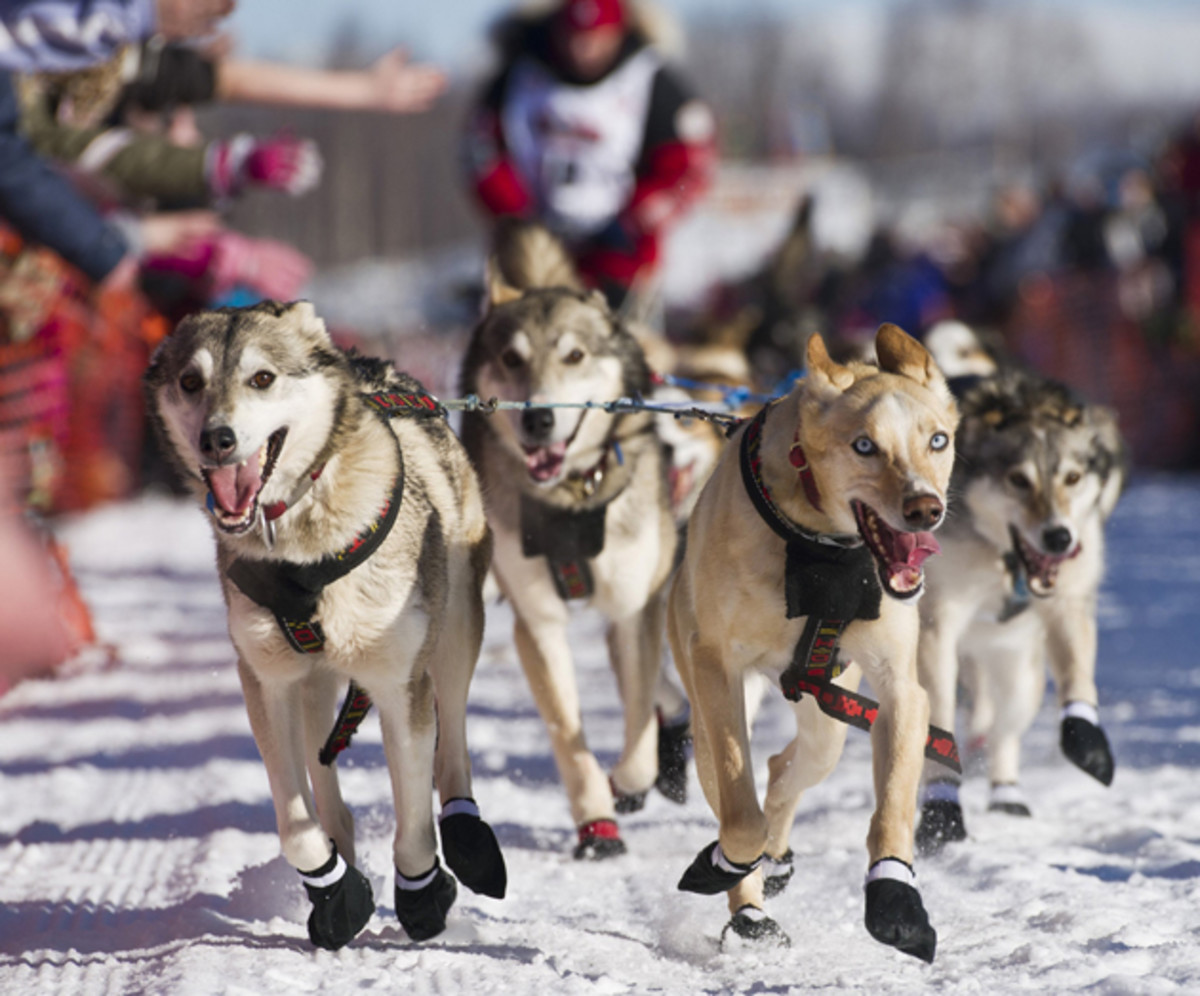
Moore, a 58-year-old Arkansas transplant, confirms his wife is tough as nails, literally. He tells the story of how they first met. They were on a construction job when Zirkle accidentally punctured her hand with a compressor gun. “I looked over and she had a nail stuck through her hand, two inches long, sticking out both sides,” he says. He yanked it out. They laughed about it. And then Zirkle went right back to work and finished the day.
As tough as she is, Zirkle is still a “gal,” as she likes to say, which puts her in the minority. About a third of the 78 mushers entered in the 2015 Iditarod are women. Rarer still are serious women contenders. In its four-decade history, only two have been first to slide under the Burled Arch in Nome that marks the Iditarod finish. Libby Riddles, a hard-nosed Wisconsin native, was the first in 1985. Butcher was favored the year Riddles won but a crazed moose attacked her team (two dogs were killed and several others injured). Riddles achieved instant notoriety, but her legacy was essentially obliterated by Butcher’s subsequent success. The iconic dog whisperer won four of the next five Iditarods.
Butcher’s accomplishments elevated the sport to new levels of popularity in Alaska and “outside,” a.k.a. the Lower 48. She became a feminist rallying cry in the second decade of Title IX, engendering the slogan still emblazoned on t-shirts today: “Alaska: Where Men Are Men and Women Win the Iditarod.” Although a new wave of women mushers entered the sport and some came close to winning, no champion followed.
****
“The gender thing?” says Zirkle. “It’s huge, it’s enormous, it’s a lot bigger than I want it to be.” Inside the sport, top mushers, both male and female say gender is a moot point in the post-Butcher era. However, to the public it matters.
“There have been times when I have been on the trail when I have seen spectators and fans and people rooting for me who truly want me to do well because I’m a woman,” Zirkle acknowledges. “That is them stepping into my world with their burdens on their shoulders. I understand that. I respect that. In that sense I’m OK with playing the woman card.”
Still, Zirkle feels no “special connection” to Butcher. They crossed paths only a few times, and never competed against one another. By the time Zirkle became a serious musher, Butcher had retired to raise her two daughters and then died from leukemia in 2006. “She was in the mom club by the time I was in the dog mushing club,” says Zirkle.
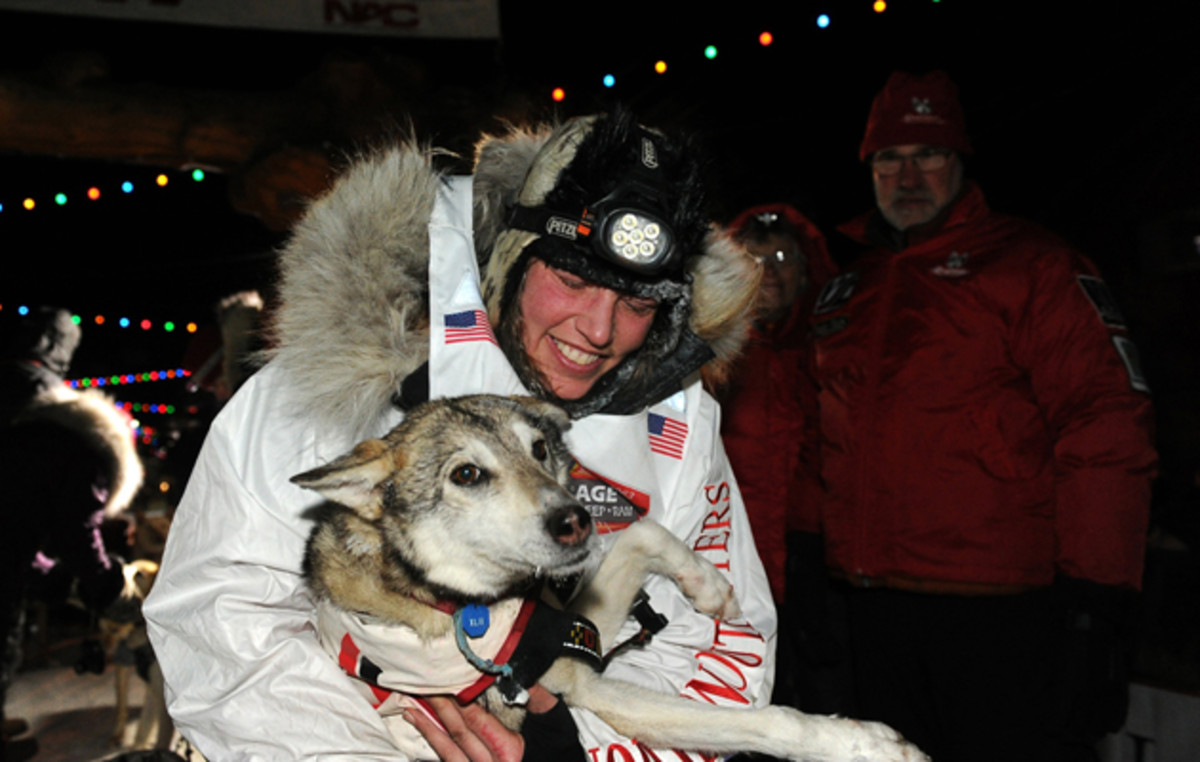
Both women are innovators. Butcher recognized that the designated checkpoints along the Iditarod—where mushers rest, catnap, savor a cup of coffee or gab with reporters – were under utilized opportunities. Butcher compensated for her dyslexia by systematizing her checkpoint routine—Monson calls her a “spatial genius”—and moved through them at lightening speed.
Zirkle has her own checkpoint twist: She often blows them off. Instead, she camps along the trail based on when she feels her team needs rest—turning her backcountry camping skills into a tactical advantage. “She’s not afraid to be unorthodox,” says 2013 Iditarod winner Mitch Seavey.
But perhaps what links the two women most is an almost telepathic bond with their dogs. Zirkle has no children (Moore has two grown daughters). She dismisses the idea of her dogs as human family. But she admits to a maternal instinct. She can discern a bark of distress or fear from a yelp of worry or joy. She is the one that wakes up in the middle of the night to see why a dog is howling. Or why another dog won’t get off its house. She worries when they’re sick or injured. She weeps when they die. “I’m emotionally wrapped up with my dogs,” she says.
****
This year, in a twist of global warming fate—and for only the second time in its history—the Iditarod has been re-routed. About a third of the southern portion is different due to lack of snow. The official start has been relocated 300 miles north from Willow, Alaska, to Fairbanks, which means it will kick off 20-minutes from Zirkle’s home. “That’s huge,” says Zirkle of the chance to sleep at home the night before the race.
She’ll need every advantage. Mushers tend to have Iditarod success in concentrated bunches, usually when they produce a great generation of dogs and the taxing race itself hasn’t eroded bodies and spirit. Since 1990, only three mushers—Dallas Seavey and four-time champions Lance Mackey and Martin Buser—have managed more than three consecutive top-5 finishes in the Iditarod.
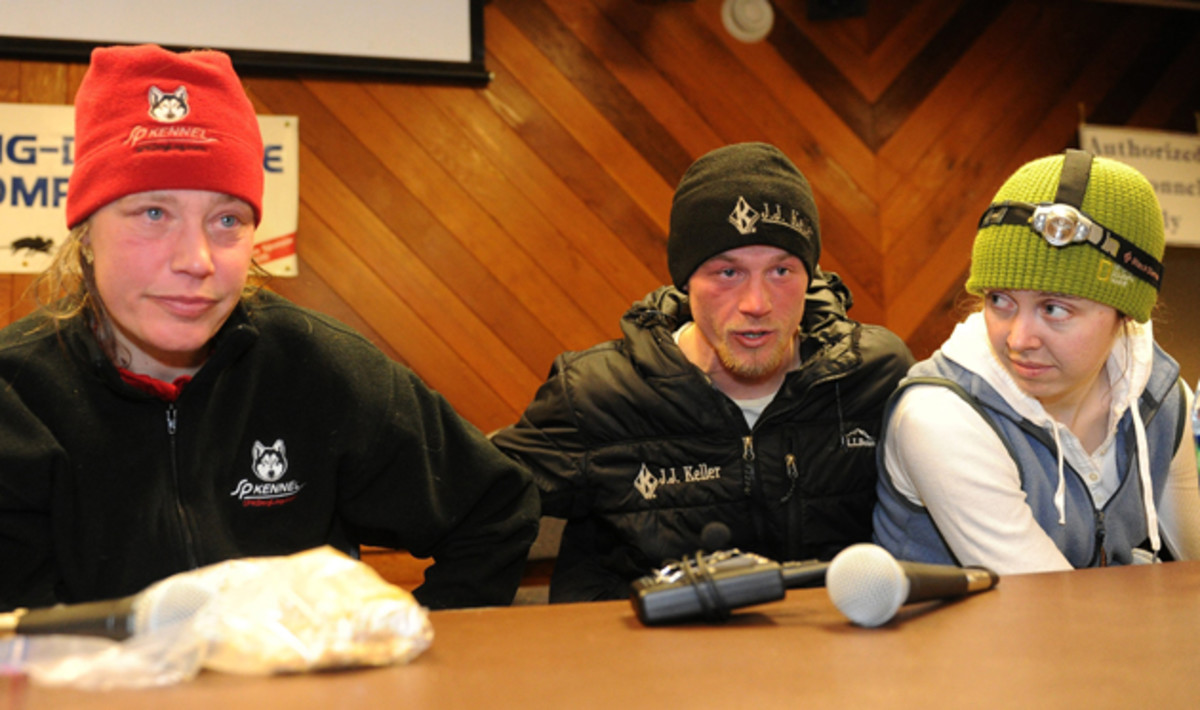
Much will depend on that other overachieving female, Quito, who turns 9 in June. The runt of the litter—Quito is short for “Poquita,” or small in Spanish—Zirkle says her 43-pound gray-and-black leader has a heart the size of Alaska. During last year’s treacherous storm, Quito often couldn’t hear Zirkle’s commands yet held the team together—a testament to the depth of the musher-dog connection.
Zirkle’s main rivals say she has the tools to win the Iditarod—brains, guts, experience, professionalism, tactical acumen. But that’s not what makes her such a threat. It’s love—love of her dogs, love of the outdoors, love of mushing. The passion, they say, that transforms a mere racer into a dog-handling guru.
“Many mushers are driven by fear or act like tough guys that try to power their way through,” says Dallas Seavey. “She races for the right reasons.”
****
“Just because you have a great dog team, everything else has to fall into place too,” explains Lance Mackey, the only musher to win four consecutive Iditarods from 2007-10. Obsessive preparation, battle-tested dogs, the right strategy aren’t enough. You need luck, Mackey says. “The fastest dog team hardly ever wins,” he adds. “But the best team always does. That means the least amount of problems from start to finish.”
Mackey wonders if the near-wins have planted self-doubt in Zirkle, especially at crunch time. “That might play into effect,” he says. “But if anybody thinks she’s not out again this year to whip ass, they’d be making a mistake.” Can Zirkle hold it together mentally? “The frenzy is definitely building,” says Moore.
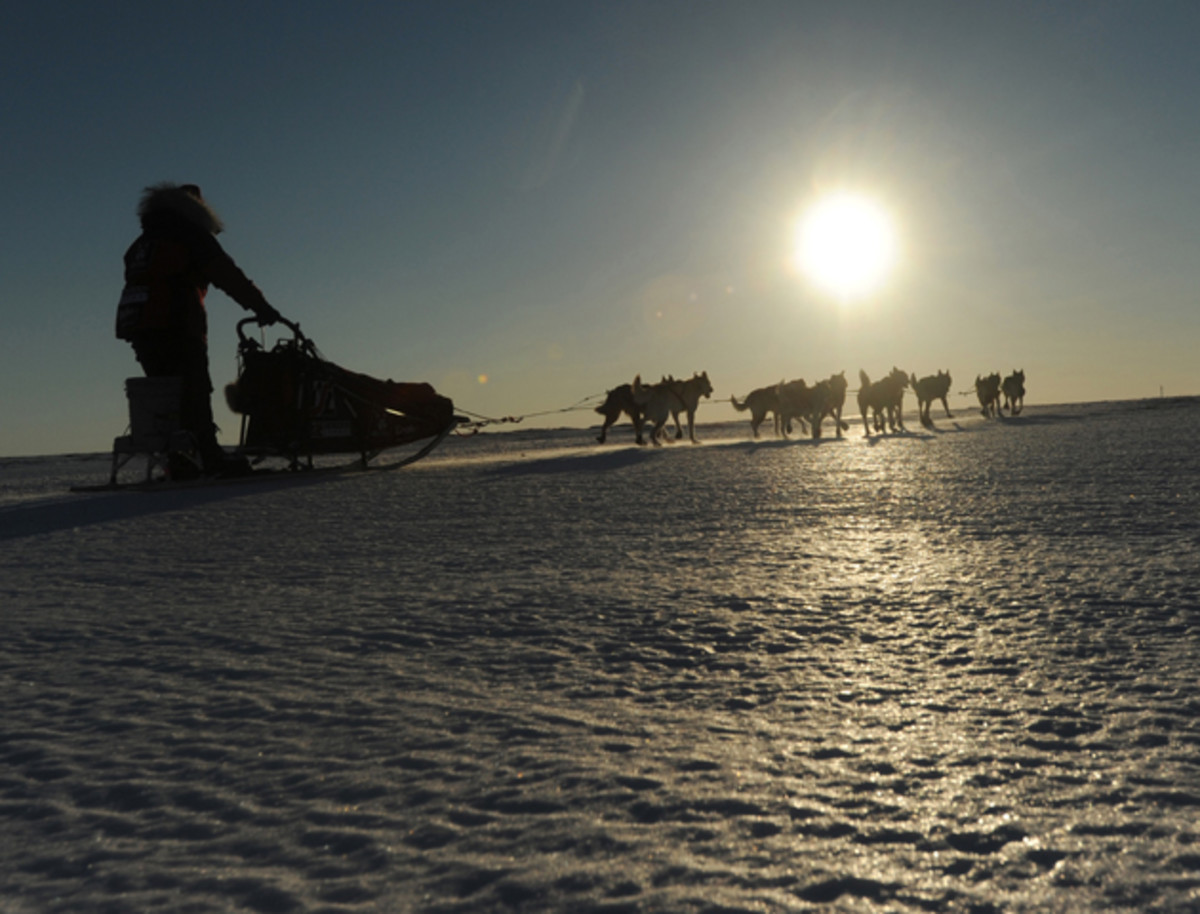
Zirkle plans to stick to her pre-race routine. The night before Monday’s official start, she planned to store up on sleep and spend time with Moore—away from any distracting hubbub. Her food drops will be done. Her dogs will be primed. When she latches the last harness and steps onto her sled, she will try to empty her mind. Anything can happen in the Iditarod.
Who’s to say if Zirkle can win this year, or any year? Either way, her destiny will again, and forever, be hitched to her dogs—to Nacho and Chica and the irrepressible Quito—and to the offspring that will follow. That might be enough.
